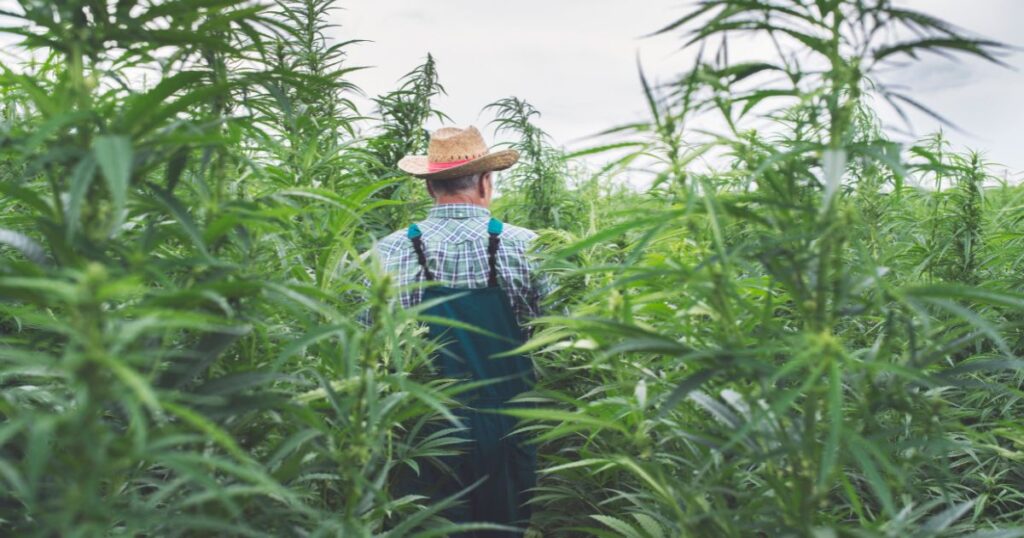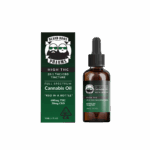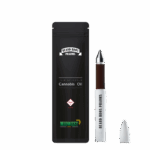The U.S. Department of Agriculture’s flawed methodology for calculating hemp cultivation value is creating a dangerous misperception that farmers aren’t benefiting from the hemp boom. New analysis reveals these errors are actively suppressing market growth and hurting the very farmers the agency aims to regulate.
In a recent press release from Whitney Economics, cannabis economist Beau Whitney recently exposed critical flaws in how USDA measures the hemp industry’s worth, showing that current methods significantly undervalue the hemp industry The consequences extend far beyond statistical accuracy—these miscalculations are making it harder for farmers to secure funding, discouraging crop diversification, and providing policymakers with misleading data that could reshape the entire industry.
The stakes couldn’t be higher. With hemp representing a potential agricultural revolution, getting the numbers right matters for farmers, investors, and the future of American agriculture.
The Core Problem with USDA’s Hemp Valuation
USDA requires hemp farmers to self-report annual data about their operations, including crop type, intended use, production volume, and harvest value. This process mirrors data collection for other agricultural crops, but hemp’s unique characteristics expose serious flaws in the standard approach.
For hemp fiber, grain, and seed, the valuation methodology works reasonably well since these products have limited applications and consistent market values. The problem emerges with floral hemp, which serves multiple purposes with dramatically different economic values.
The agency calculates floral hemp value using a blended average of biomass and flower sales. This creates a massive distortion because hemp flower commands premium prices while biomass sells at commodity rates.
Whitney’s analysis reveals the difference: hemp flower averaged $330 per pound in 2024, while biomass sold for just $2 per pound. Yet USDA’s methodology produced an average value of only $18.56 per pound for floral output—a figure that dramatically underrepresents the sector’s true worth.
The Mathematics Behind the Miscalculation
USDA data shows floral cannabis output reached 20.8 million pounds in 2024, valued at $386 million using their blended average methodology. However, this calculation hides the reality of hemp economics.
At the actual flower price of $330 per pound, just 1.2 million pounds of flower would generate $386 million in value. This means the remaining 19.6 million pounds would need to consist entirely of low-value biomass to justify USDA’s average price calculation.
The mathematical inconsistency becomes even more apparent when considering market dynamics. If valued at true flower prices, the 20.8 million pounds would represent $6.86 billion at wholesale level—not the $386 million reported by USDA.
This represents 24.2% of total retail value reaching farmers, significantly higher than corn (15%) or soybeans (7.9%). Rather than underperforming compared to traditional crops, hemp farmers are actually capturing a larger share of downstream value.
Real-World Impact on Hemp Farmers and Investors
These valuation errors create cascading problems throughout the hemp supply chain. Investors relying on USDA data see an industry where farmers capture less than 1% of total market value, making hemp appear economically unattractive compared to other agricultural opportunities.
This misperception affects access to capital. Banks and agricultural lenders use government data to assess crop viability and loan risk. When official statistics suggest minimal farmer profitability, securing financing becomes significantly more difficult.
The undervaluation also influences crop rotation decisions. Hemp farmers planning their plantings rely heavily on government projections and market assessments. If hemp appears less profitable than reality suggests, farmers will naturally gravitate toward crops with seemingly better returns.
Infrastructure development suffers as well. Processing facilities, storage systems, and transportation networks require substantial investment based on projected crop values. Artificially low valuations discourage the infrastructure investments necessary for industry growth.
Policy Implications and Congressional Concerns
The valuation errors have already influenced policy discussions at the highest levels of government. During recent Congressional hearings, lawmakers cited USDA figures showing farmers receiving less than 1% of hemp-derived product revenues when arguing for industry restrictions.
These policy debates matter enormously for hemp’s future. If legislators believe farmers aren’t benefiting from hemp cultivation, they’re more likely to support restrictive regulations or reduced agricultural support programs.
The misperception also affects international competitiveness. Other nations developing hemp industries can point to apparently weak U.S. farmer economics as evidence that their own approaches are superior, potentially affecting trade relationships and market positioning.
Federal agricultural support programs also rely on crop value assessments to determine subsidy levels, insurance rates, and research funding priorities. Undervalued crops receive proportionally less support, creating a self-fulfilling prophecy of reduced investment and growth.
Methodology Needs Immediate Reform
Fixing USDA’s hemp valuation requires acknowledging the fundamental differences between hemp and traditional agricultural commodities. The current one-size-fits-all approach ignores hemp’s diverse product streams and varying value propositions.
A more accurate methodology would separate flower and biomass valuations entirely, tracking each market segment independently. This would provide clearer pictures of where value creation occurs and how different cultivation approaches affect farmer returns.
Enhanced data collection could include quality grades, end-use applications, and regional price variations. Hemp grown for pharmaceutical extraction commands different prices than hemp destined for textiles or construction materials.
Regular market surveys and price discovery mechanisms would help capture real-time valuation changes. Hemp markets evolve rapidly compared to traditional commodities, making static assumptions particularly problematic.
Path Forward for Hemp Agriculture
Correcting these valuation errors could transform hemp’s agricultural prospects. Accurate data showing hemp farmers capturing 24.2% of retail value would likely attract significant new investment and encourage crop diversification.
Financial institutions would view hemp more favorably with proper valuation metrics, improving access to agricultural credit and expansion capital. This could accelerate the infrastructure development necessary for scale production.
Policymakers armed with accurate data might develop more supportive regulatory frameworks, recognizing hemp’s genuine contribution to agricultural economics rather than viewing it as a marginal sector requiring restriction.
Research and development funding could increase substantially if hemp’s true economic potential becomes apparent to agricultural institutions and government agencies.
This is a Critical Moment for Hemp Economics
USDA’s hemp valuation methodology is more than a technical accounting issue—it’s shaping the future of American hemp agriculture through systematic undervaluation that discourages investment, misleads policymakers, and undermines farmer confidence.
Whitney’s analysis highlights that hemp farmers are actually outperforming traditional crop farmers in terms of value capture, contradicting the narrative of an industry failing to benefit producers. This demands immediate methodological reforms to prevent continued market distortion.
The hemp industry stands at a crossroads. Accurate valuation could unlock significant growth potential, while continued undervaluation threatens to suppress an agricultural sector with genuine economic promise. For American farmers considering hemp cultivation, getting these numbers right isn’t just about statistics—it’s about the future of their operations and the broader agricultural economy.
The time for correction is now, before flawed methodology permanently damages hemp’s agricultural potential and denies farmers the economic opportunities this versatile crop actually provides.
















